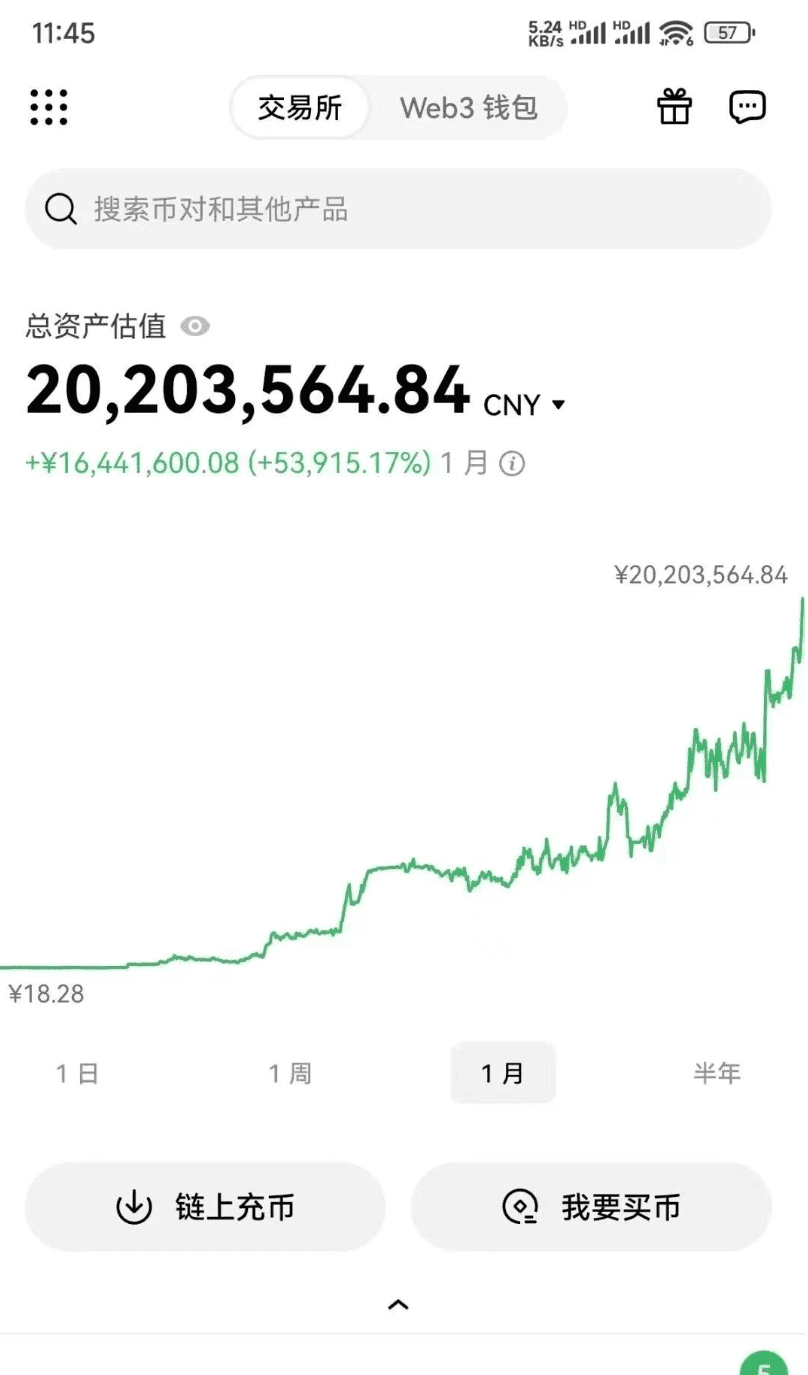Ten years of deep cultivation in the cryptocurrency world, with ups and downs during this period. I entered the market in 2015, turning 500,000 into over 7 million at its peak. At that moment, I thought I was a trading master, focusing solely on trading cryptocurrencies, even borrowing money to trade. However, reality taught me a lesson. I encountered continuous problems afterwards, not only losing all my gains but also becoming heavily in debt, ultimately having to sell off my car and house among other assets.
2017 was my darkest moment; in just a few months, I experienced a fall from peak to trough.
Later summarizing and reflecting, I was fortunate to share tea and have in-depth discussions with several big names in the cryptocurrency circle. Their words deeply resonated with me and shook my soul.
Later, I began to summarize methods, continuously reviewing and reshaping my trading strategies. I used dreamer tools to create my own trading methods, changed my thought processes, and engaged in ongoing learning and updates. Although I can't say I've reached the pinnacle of life, I have achieved stable profits and can reliably outperform over 80% of people. Looking back at the entire journey, it has been full of twists and turns.
From an initial investment of 500,000, I made a fortune of 10 million during the bull market; then I worked my way to my current small target. Now, at the end of this year, I am waiting for and preparing for the next bull market, aiming to achieve three small targets.

How to match short-term and long-term dollar-cost averaging with quantitative trading.
As a newcomer in the crypto space, you must clearly recognize the risks of the cryptocurrency market and learn essential trading skills, along with the necessary mindset.
Prepare well to avoid common cryptocurrency trading pitfalls, and try to avoid falling into traps. However, there are too many trading methods and skills on the market, and fundamentally, there are only four ways to make money: short-term, medium to long-term, dollar-cost averaging, and quantitative trading in the crypto space. Short-term trading.
Short-term trading generally refers to operations over a short period, buying low and selling high to earn the price difference, characterized by speculation. As long as you combine technical indicators and reference fundamental news, you can get started, but it is easy to chase highs and sell lows, and with a small mistake, you could end up standing guard at the peak.
Target audience: those with certain technical skills who can spend at least half an hour each morning, noon, and evening watching the market. For medium to long-term trading, it’s not just about buying and forgetting; it requires focus and diligence, along with in-depth analysis of the fundamentals.
In the market, you need to have a sufficiently strong psychological tolerance and a certain perspective on future trends. If your view is inconsistent with the trend, it can lead to huge losses.
Target audience: those who do not have time to watch the market, enjoy researching and analyzing, have full confidence in the future development of the coins, and are willing to understand the underlying technology and development prospects.
Dollar-cost averaging
Dollar-cost averaging is a method of seeking average returns over the long term and is less affected by bull and bear markets. If you have experience with fund dollar-cost averaging, you should understand digital currency.
Dollar-cost averaging is not difficult to understand, and the returns from digital currencies are higher than those of funds. As long as you invest regularly and in fixed amounts, select a few cryptocurrencies to create a portfolio, and set profit-taking and stop-loss levels, the returns will definitely be substantial. Suitable for: wage earners, those interested in digital currencies but lacking time for analysis, and anyone with fixed spare funds each month.
I've been trading cryptocurrencies for 10 years, going from significant losses to substantial gains, summarizing 10 iron rules, and giving all retail investors a piece of advice! If you want to play in the crypto space for the long term, please read this article carefully! Newcomers must keep it in mind to navigate the market skillfully.
The cryptocurrency market is a world full of opportunities and risks, especially for newcomers. Learning how to survive and profit in such a volatile market is a discipline that requires continuous learning and practice.










Finally, to summarize: the two key factors for survival in the crypto space.
If you feel confused or overwhelmed during trading, remember the following two points:
1. Strong action is required: Opportunities are fleeting, and decisive action is needed to seize them.
2. Stay online: The cryptocurrency market changes rapidly, and it is crucial to obtain the latest information and react promptly. The crypto market is full of challenges, but as long as you master these rules, remain calm and rational, you can find your opportunities in this market. Remember, investing is a marathon, not a sprint; patience and strategy are keys to success!
If the pattern determines life, then what exactly determines the pattern?
Many retail investors often find that while their strategies and analyses are excellent, they cannot execute them.
In life, we might call it a lack of self-discipline, but in trading, it often relates to mindset and confidence. If the reasoning behind the planned strategy is insufficient, and the bullish-bearish thinking and point selection are too random, it will be easy to hesitate when a sharp drop or rise reaches your entry point. Additionally, being excessively conservative actually means lacking flexibility and strength, using caution as an excuse.
An excellent trader is cultivated on the battlefield, not in theory books; a wrong mindset, fear of stop-loss, and an inability to view profits and losses with equanimity lead to overly magnified stop-loss fears.
Rome wasn't built in a day, and dripping water wears through stone. Everything requires slow accumulation; nothing can be achieved overnight. The same goes for investing. If you enter the investment market with the expectation of getting rich overnight, you may find profits moving further away from you.
Mu Qing often tells friends one thing: getting rich overnight is not as good as steady income, and big ups and downs are not as reassuring as steady profits.
If you plan to trade cryptocurrencies for the long term but don't understand the technology and haven't found effective trading tips, you might as well try this super simple 'foolproof strategy'. Even if you're a complete novice, you can easily get started, with a success rate of up to 80%. Whether buying or selling, just follow the instructions.
First, you need to pick those coins that are rising or at least stable. Directly pass on those that are falling or showing a clear downward trend.
Then, divide your money into three parts. When the price exceeds the 5-day moving average, carefully buy one-third first. When it surpasses the 15-day moving average, buy another third. If it can exceed the 30-day moving average, buy the remaining third as well. This step must be strictly followed; do not be lazy.
Next, if the price of the coin does not have the strength to continue rising after surpassing the 5-day moving average and instead drops, as long as it doesn't break below the 5-day moving average, hold steady. If it breaks, sell quickly.
The same principle applies. If the price of the coin has exceeded the 15-day moving average but lacks the strength to continue rising, as long as it does not break below the 15-day moving average, hold on to it. If it breaks, sell one-third first. If the 5-day moving average remains stable, continue holding it. If the price exceeds the 30-day moving average and then drops, still follow the above rules: sell if you need to.
Conversely, the same applies when selling coins. When the price is high, if it breaks below the 5-day moving average, sell one-third first. If it does not continue falling...
If the price drops, continue holding the remaining 60%. However, if the 5-day, 15-day, and 30-day moving averages all break, you must liquidate completely without hesitation.
This foolproof strategy, though simple, is crucial to stick to the rules. After buying, you must set the rules for buying and selling. Only by strictly adhering to the rules can you make money!#加密市场回调